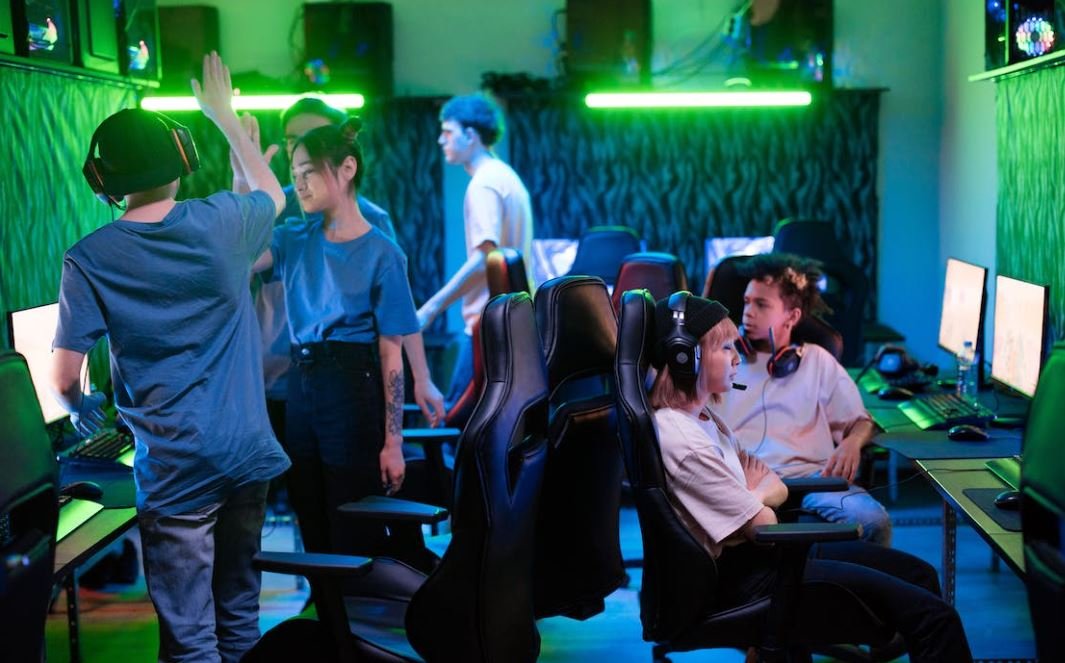Introduction
OpenAI, the artificial intelligence research laboratory, was founded in December 2015. The organization’s primary mission is to ensure that artificial general intelligence (AGI) benefits all of humanity. Since its establishment, OpenAI has made significant progress in the field of AI research and development, making headlines with breakthroughs such as GPT-3, an advanced language model. This article provides a comprehensive overview of OpenAI’s journey, achievements, and the impact it has had on the AI landscape.
Key Takeaways
- OpenAI was founded in December 2015 with a focus on artificial general intelligence (AGI).
- GPT-3, OpenAI’s advanced language model, gained widespread attention for its remarkable capabilities.
- OpenAI’s research and development efforts have had a significant impact on the AI community.
- The organization strives to ensure AGI’s benefits are accessible to everyone.
Early Years and Foundation
OpenAI was established in December 2015 by entrepreneurs Elon Musk, Sam Altman, Greg Brockman, Ilya Sutskever, and Wojciech Zaremba. The organization initially focused on conducting research to make AGI safe and promote its widespread benefits. Its founders recognized the potential risks associated with AGI development and sought to align AI development with human values *from the very beginning*.
In its early years, OpenAI published influential research papers, addressing key challenges in the field of artificial intelligence. They made significant contributions to deep learning, reinforcement learning, and natural language processing—areas that would later be crucial to OpenAI’s groundbreaking achievements *that continue to shape the AI field today*.
GPT-3 and Breakthroughs
One of OpenAI’s most notable achievements is the development of GPT-3 (Generative Pre-trained Transformer 3). Released in June 2020, GPT-3 is renowned for its ability to generate coherent text and perform a wide range of tasks with minimal supervision. With 175 billion parameters, GPT-3 astonished the AI community and demonstrated OpenAI’s commitment to pushing the boundaries of language models.
GPT-3 has been described as a “language model on steroids” due to its unprecedented scale and versatility.
GPT-3’s impact rippled through various sectors, including creative writing, content generation, customer service chatbots, and even programming assistance. Developers worldwide eagerly explored GPT-3’s potential, unleashing a wave of innovative applications shaping the future of AI-powered solutions.
OpenAI’s Influence and Collaborations
OpenAI has not only worked on developing advanced AI models but has also actively helped shape the AI community by fostering collaborations. The organization has been at the forefront of promoting responsible AI practices, sharing research findings, and supporting open-source tools to drive innovation and collaboration across the field.
OpenAI’s partnerships with universities, research institutions, and industry leaders have further bolstered its impact. The organization actively seeks to collaborate and contribute to the collective understanding and development of AGI, recognizing the importance of diverse expertise and perspectives in shaping the future of AI.
Table 1: OpenAI’s Significant Achievements
| Year | Notable Achievement |
|---|---|
| 2015 | OpenAI founded with a focus on AGI research |
| 2018 | OpenAI publishes research paper on unsupervised language translation |
| 2020 | GPT-3, a groundbreaking language model, is released |
| 2021 | OpenAI launches OpenAI Gym, a popular toolkit for reinforcement learning |
Enabling Accessible AGI Benefits
OpenAI’s mission goes beyond technological advancements – the organization aims to ensure that AGI benefits all of humanity. OpenAI adheres to a set of principles emphasizing long-term safety, technical leadership, cooperation, and prioritizing benefits for everyone. By actively working to minimize AGI’s potential risks and promoting its widespread distribution, OpenAI seeks to avoid a scenario where access to AGI and its advantages becomes exclusive or limited.
OpenAI acknowledges the challenges in AGI development, emphasizing the need for collective effort and global cooperation to address them effectively. The organization actively strives to encourage responsible practices, ethical frameworks, and policies that safeguard the interests and well-being of society as a whole.
Table 2: OpenAI’s Principles
| Principle | Description |
|---|---|
| Broadly distributed benefits | OpenAI commits to using any influence it obtains over AGI’s deployment to ensure it benefits everyone. |
| Long-term safety | OpenAI is dedicated to conducting research to make AGI safe and promoting its safe development and deployment in the long run. |
| Technical leadership | OpenAI aims to be at the forefront of AI capabilities to effectively address AGI’s societal impact. |
Nurturing Future Innovations
As OpenAI continues its journey, the organization actively encourages and supports research that propels AI innovation forward. The release of tools and frameworks like OpenAI Gym, OpenAI API, and the partnership programs seeks to foster collaboration, accelerate development, and ensure the responsible integration of AI solutions into myriad domains.
By nurturing a culture of openness, collaboration, and shared knowledge, OpenAI aspires to shape AI’s future in a way that benefits humanity and drives sustainable progress.
Table 3: OpenAI’s Collaborative Initiatives
| Collaboration | Description |
|---|---|
| Partnerships with universities | OpenAI collaborates with academic institutions, fostering research and shared learning. |
| Industry collaborations | OpenAI works alongside leading companies to collectively drive AI advancements and applications. |
| Open-source contributions | OpenAI actively supports the development and availability of open-source AI tools, datasets, and models. |
OpenAI’s journey is marked by its relentless pursuit of AGI‘s safe development, responsible practices, and the democratization of AI’s transformative power. With its contributions, breakthroughs, and collaborative spirit, OpenAI continues to drive global progress in the field of artificial intelligence, shaping the future of AGI for the better.
DISCLAIMER: This article is for informational purposes only and does not constitute financial, legal, or professional advice. The views and opinions expressed in this article are those of the author(s) and do not necessarily reflect the official policy or position of any agency or organization.

Common Misconceptions
OpenAI’s Origins
One common misconception people have about OpenAI is that it was founded as a venture capitalist-backed start-up. In reality, OpenAI was initially created as a non-profit research organization with the aim of developing artificial general intelligence for the betterment of humanity.
- OpenAI was co-founded by Elon Musk, but it is not a part of Tesla or SpaceX.
- The organization was established in December 2015, and its official launch happened in April 2016.
- While OpenAI has received funding from various sources, including venture capitalists, its primary focus remains on advancing AI technology rather than generating profits.
OpenAI’s Objectives
Another misconception is that OpenAI is solely focused on creating superhuman AI that could potentially become dangerous. Although OpenAI acknowledges the need for safety precautions, their primary objective is to ensure that AGI benefits all of humanity instead of being controlled by a select few.
- OpenAI is committed to conducting research that makes AGI safe and promotes the adoption of these safety measures within the AI community.
- The organization also aims to cooperate with other research and policy institutions to create a global community that collaborates on addressing AGI’s global challenges.
- OpenAI actively encourages the dissemination of information regarding AI research, prioritizing open access to ensure transparency and inclusivity.
OpenAI’s Accessibility
Many people mistakenly believe that the advancements and breakthroughs made by OpenAI are closely guarded secrets. While OpenAI does safeguard its technology, it is also committed to ensuring that AGI is accessible to all, without withholding any crucial knowledge or breakthroughs from the public.
- OpenAI is dedicated to providing public goods and freely sharing most of its research and findings.
- However, there may be exceptions when some safety and security concerns limit full transparency.
- OpenAI aims to strike a balance between openness and keeping some information safeguarded to prevent potential misuse.
OpenAI’s Current Capabilities
Another misconception is that OpenAI’s AI models can perform any task with superhuman capabilities. While OpenAI has made remarkable progress, the current capabilities of its models are not unlimited, and there are still limitations to what they can achieve.
- OpenAI’s models can demonstrate impressive performance in specific domains such as text generation or image recognition, but they may struggle with more complex or diverse tasks.
- OpenAI continues to refine its models and address their limitations to improve their overall performance.
- It is important to understand that OpenAI’s models are not infallible and are prone to biases or errors like any other AI system.

OpenAI Founders
OpenAI was founded in December 2015 by five individuals with diverse backgrounds and expertise in the field of artificial intelligence.
| Name | Education | Expertise |
|---|---|---|
| 1. Elon Musk | University of Pennsylvania | Entrepreneurship and Technology |
| 2. Sam Altman | Stanford University | Computer Science and Entrepreneurship |
| 3. Greg Brockman | Massachusetts Institute of Technology | Computer Science and Artificial Intelligence |
| 4. Ilya Sutskever | University of Toronto | Machine Learning and Neural Networks |
| 5. Wojciech Zaremba | New York University | Deep Learning and Reinforcement Learning |
Funding Sources
OpenAI has managed to secure significant financial support from various sources to advance its mission of ensuring that artificial general intelligence (AGI) benefits all of humanity.
| Source | Amount (in millions) |
|---|---|
| 1. Elon Musk | $100 |
| 2. Sam Altman | $10 |
| 3. Microsoft | $1,000 |
| 4. Khosla Ventures | $20 |
| 5. Reid Hoffman | $5 |
OpenAI’s Mission
OpenAI’s primary objective is to ensure that artificial general intelligence is developed and deployed for the benefit of all humanity, while minimizing potential risks and ensuring its safe and equitable usage.
| Key Principles |
|---|
| 1. Broadly distributed benefits |
| 2. Long-term safety |
| 3. Technical leadership |
| 4. Cooperative orientation |
| 5. Ethical considerations |
OpenAI’s AI Models
OpenAI’s AI models have played a significant role in advancing the field of artificial intelligence and have garnered attention for their impressive capabilities.
| Model | Notable Features |
|---|---|
| 1. GPT (Generative Pre-trained Transformer) | Language generation and comprehension |
| 2. CLIP (Contrastive Language-Image Pre-training) | Understanding images and language together |
| 3. DALL-E | Generating images from textual descriptions |
| 4. OpenAI Five | Competitive Dota 2 AI |
| 5. Codex | AI for writing code |
Prominent Collaborations
OpenAI has actively collaborated with various organizations and entities to foster innovation and accelerate the development of AI-driven solutions.
| Collaborator | Area of Collaboration |
|---|---|
| 1. Microsoft | AI research and development |
| 2. Google | AI ethics and policy |
| 3. Tesla | Autonomous driving technologies |
| 4. Facebook | Social media analysis and recommendation systems |
| 5. National Institutes of Health (NIH) | Medical research and AI applications |
OpenAI’s Achievements
OpenAI’s relentless pursuit of technological breakthroughs has yielded remarkable accomplishments and milestones in the AI landscape.
| Achievement | Date |
|---|---|
| 1. Defeating world’s top Dota 2 players with OpenAI Five | August 2018 |
| 2. Launching GPT-3, the largest language model to date | June 2020 |
| 3. Releasing DALL-E, showcasing image synthesis capabilities | January 2021 |
| 4. Participating in the COVID-19 Therapeutics Accelerator | April 2020 |
| 5. Conceiving the idea of AI safety research | December 2015 |
Influence on AI Policy
OpenAI has been an active advocate for responsible AI and has significantly contributed to shaping AI policy around the world.
| Policy Area | Influence Level |
|---|---|
| 1. Ethical AI use | High |
| 2. Algorithmic transparency | Moderate |
| 3. Regulatory frameworks | High |
| 4. Data privacy | Moderate |
| 5. International cooperation | High |
OpenAI’s Future Goals
OpenAI continues to drive innovation and aims to accomplish several important objectives in the upcoming years.
| Future Goal |
|---|
| 1. Release safer and more beneficial AI technologies |
| 2. Conduct advanced AI research to solve global challenges |
| 3. Collaborate with other organizations to achieve AGI |
| 4. Address societal impacts of AI through policies and initiatives |
| 5. Promote responsible and ethical AI adoption worldwide |
OpenAI’s journey has been characterized by groundbreaking research, impressive achievements, and a commitment to ensuring the benefits of AI are accessible to all. With its visionary mission, esteemed founders, and influential collaborations, OpenAI is poised to shape the future of artificial general intelligence with a human-centric approach.
Frequently Asked Questions
When did OpenAI start?
Who founded OpenAI?
What is the mission of OpenAI?
What is artificial general intelligence (AGI)?
How does OpenAI conduct its research?
Is OpenAI involved in developing AI applications?
Does OpenAI provide access to its research?
How can I stay updated with OpenAI’s latest developments?
Is OpenAI hiring?
How can I contact OpenAI?




